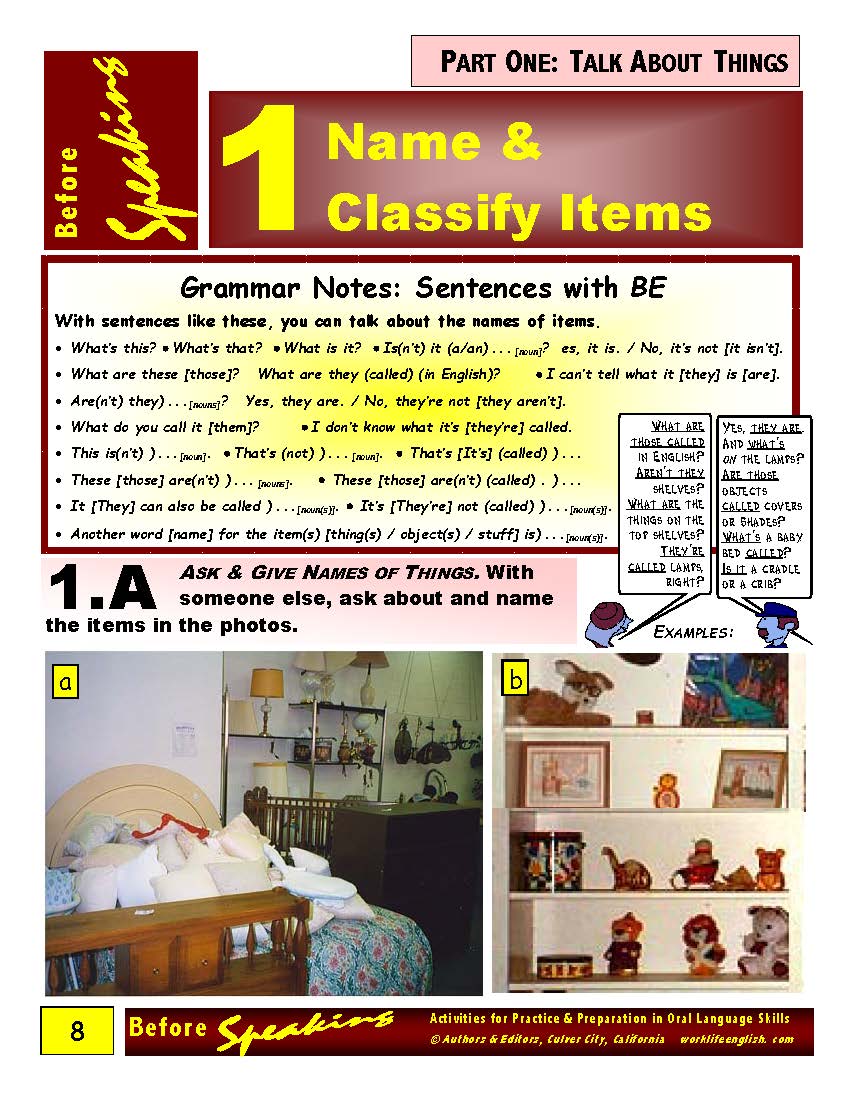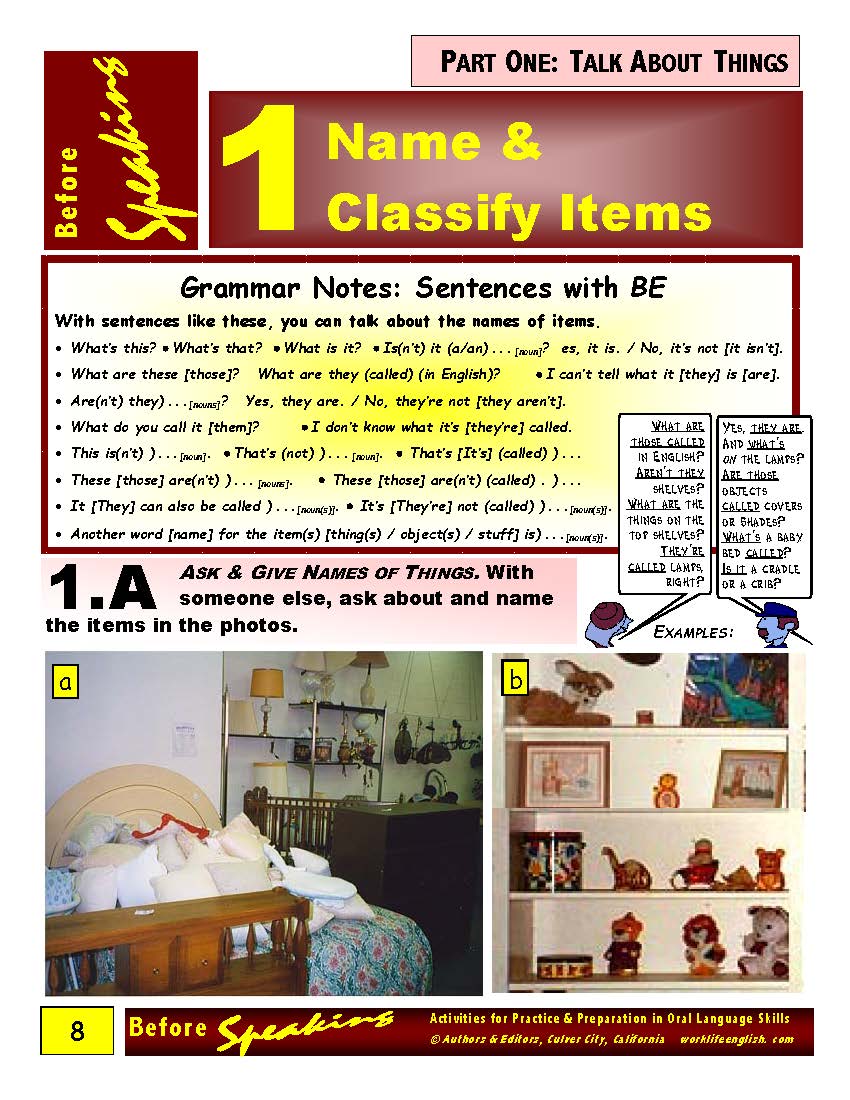1
/
of
1
Work/Life English
E-01.03 Talk About Things - Name & Classify Items (in Locations & Categories)
E-01.03 Talk About Things - Name & Classify Items (in Locations & Categories)
Regular price
$5.00 USD
Regular price
Sale price
$5.00 USD
Unit price
/
per
Before Speaking: Activities for Practice & Preparation in Oral Language Skills. Part One Talk About Things: 1: Name & Classify Items, pages 8-19 + 12 Answer Key Pages with Suggested (Model) Responses
13 + 12 (25) pages
Who It’s For: English-Language Teachers, Learners, & Helpers Ready to “Talk About Things” by Naming & Classifying Items (While Emphasizing Vowel Sounds)
Why It’s Useful: Whether mindful of specific Pronunciation features (like Vowel Sounds) or not, students of oral English need to hear and talk about something—and it makes the most sense to begin with “Things.” That’s because “Singular, Plural, & Uncountable Nouns” comprise a large part of the lexicon. They’re easily illustrated. They suggest basic but interesting topics to converse about. Here’s visual / textual, grammatical / vocabulary input sure to produce meaningful output in verbally connected discourse and exchanges. It’s followed by inserts of suggested language to use (as templates) that will make the material “self-instructional” as well as “valuable in live instruction.”
What You’ll Do:
[1] Together, view and comment on the page 7 Part One Opener to Before Speaking: Activities for Practice & Preparation in Oral Language Skills. Anticipate the nature of its content (“Talk About Things”) and the Competencies it addresses. The first of these is to “Name & Classify Items.” Tell what (you think) Listening & Speaking pedagogy and activities with these aims might entail.
[2] On pages 8-9. follow Instructions 1.A to Ask & Give Names of Things. Use the sentence patterns in Grammar Notes: Sentences with BE when they apply to items in the photos and your actual environment. On pages 10-13, use there is / are with Location Phrasing in Activity 1.B Name Things in Locations. In *1.C, use given and your own photos (and reality) to Tell Changes in Things.
[3] On pages 14-17, get Vocabulary & Grammar Notes: Categories. To Classify Things in charts and with visuals, follow instructions for 1-D Oral-Language Skills activities & games. Employing clear articulation, go over the page 18 Summary Vocabulary List.
[4] If you’re ready to show what you can do, prepare, give, and improve a ***1.E Mini-Speech on one or more topics relating to the naming or classifying of items. Listen well to others’ talks; contribute what you can to everyone’s linguistic improvement.
[5] Note that the 12 attached Answer Key pages offer many samples, models, and more.
Couldn't load pickup availability


